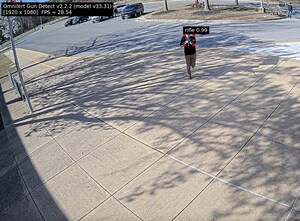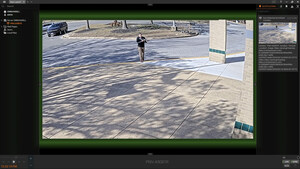Survey Shows Most Schools Regularly Test Emergency Notification System
Survey by e2Campus is first to reveal many differences in how schools test their ENS
LEESBURG, Va., April 14 /PRNewswire/ -- Omnilert®, LLC, maker of e2Campus®, the leading unified emergency notification system for education, today announced the results of a customer survey that measured the testing practices of clients' emergency notification systems (ENS).
A brief survey was sent out to a random sampling of e2Campus clients asking for basic ENS testing practices. The first 100 schools to respond provided the results, and some trends were very easy to spot.
The vast majority (82%) of schools polled do test their ENS regularly. Of the 18% of schools that do not test, half of them expressed an interest in a testing procedure, but simply have not had the time or resources to put a plan together.
Forty-four percent (44%) of schools polled test once per semester, with a smaller amount (14%) testing once per month. Some schools (16%) have a testing plan in place, but test "as needed," rather than on a schedule.
A full sixty-two percent (62%) of participating schools perform a "full test" during the year, sending SMS and emails to all users, rather than a limited "test list." Of those schools, 8% perform additional testing at other times during the year, but send messages to a limited testing group instead.
The criteria for a test to be designated a success differed from school to school. Most schools polled also differ in how they respond to their testing results. Many of the administrators stated that they do not review the results in any way, and simply leave it up to staff and students to verify that they received the message. Several of those schools also stated that the email and SMS tools "simply work," so there is no need to review the results.
Other universities simply look for a successful send as their testing goal. If the message appears on all of their endpoints… posting to Twitter or Facebook, appearing on their website or digital signage, or setting off the loudspeakers in the student union... then they consider the test a success.
Of the schools that do use delivery statistics to analyze the results, testing is usually followed by a questionnaire, or a mass email requesting that the "failed" users modify their account settings or contact a support department for assistance.
"Too many 'full-tests' could lead people to ignore real threats or view your test alerts as SPAM, and unsubscribe altogether," explained Ara Bagdasarian, CEO of Omnilert. "It's important to balance the benefit of your system tests versus the possible backlash. But keep in mind; it's not just about testing the ENS service. It's also about testing your own infrastructure, your emergency response plan and policy, as well as managing your staff's and students' expectations of your public safety efforts."
Mr. Bagdasarian concluded, "Testing an ENS regularly will help keep skills sharp and allows schools to be prepared when an actual emergency occurs."
The key to interpreting test results is to look for trends. If the same mobile carrier always seems to reject texts, it may indicate a problem in the school's area that can be addressed. If a large number of emails on the school's domain show up as rejected, the school may need to double-check their local firewall or spam filter. If a large number of voice calls show up as "busy," the school may be overwhelming their local phone lines. The combination of user feedback with e2Campus delivery confirmation reports that provides specific delivery data can help schools troubleshoot all of these situations.
About e2Campus
Used by more than 700 schools around the country, e2Campus is the first and most trusted unified emergency notification system in education. The award-winning, CAP compliant, Tier-1 notification system enables non-technical staff to administer and send custom or predefined messages instantly to the entire campus community for improved crisis communications. There is no traditional software to install, no hardware to buy and no additional phone lines needed. Through one unified interface, e2Campus instantly and simultaneously sends multimodal alerts to a subscriber's mobile phone (via SMS text message), landline phone (via voice message), computer desktop (pop-up), and e-mail accounts, plus school infrastructure such as PA systems, digital signage, alert beacons, Facebook Pages, Twitter Accounts, and relevant school Web pages. To learn more, visit http://www.e2Campus.com.
About Omnilert
Omnilert, LLC is the leading provider of unified mass notification systems for better business continuity, emergency management, and routine communication. The easy-to-use, self-service, Web-based system enables a single person to communicate timely information to thousands of people anywhere, anytime, on any device or service. The award-winning company's 3,000 clients include the U.S. Army, GE, Harvard University, Boeing, American Red Cross, UNICEF, sanofi-aventis, and the National Institutes of Health. Omnilert solutions are sold under the brand names e2Campus, Amerilert, and RainedOut. The privately held company is headquartered in Leesburg, Va., and at http://www.omnilert.com online.
Available Topic Expert(s): For information on the listed expert(s), click appropriate link.
Bryan Crum
https://profnet.prnewswire.com/Subscriber/ExpertProfile.aspx?ei=74080
SOURCE Omnilert, LLC
WANT YOUR COMPANY'S NEWS FEATURED ON PRNEWSWIRE.COM?
Newsrooms &
Influencers
Digital Media
Outlets
Journalists
Opted In






Share this article